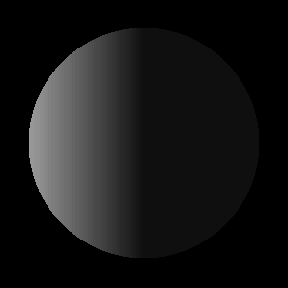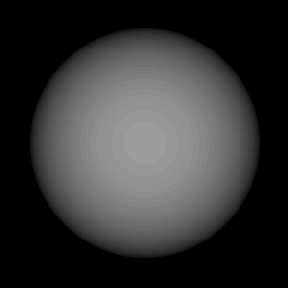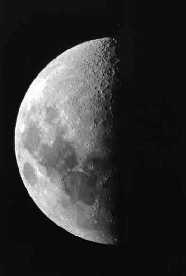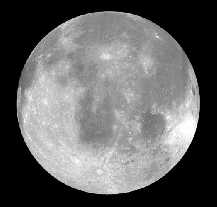Lunacy
I have a long-term interest in our nearest neighbor, the Moon. Specifically, why is it so much brighter at full moon than on the one or two adjacent evenings waxing or waning? The Moon still appears full, but is nowhere near as bright. In addition, some full moons are quite a bit brighter than others.
If the moon were a perfectly diffuse (i.e., lambertian) reflector, the ratio of apparent intensity of the full moon to the quarter moon would be pi, but in reality the ratio is more like 10. We know the reason, it’s the so-called opposition effect, also known as retroreflection. We also are pretty sure of the causes; a fraction of the lunar dust covering the surface came from ejecta from meteorite collisions. When a meteorite strikes the lunar surface with sufficient energy, the ejecta will melt, and then harden into quasi-spherical glassy particles before landing on the surface. If the material has a relatively high index of refraction and the particles are sufficiently small that they are partially transparent, then they act like cats eyes, and reflect a disproportionate amount of radiant power back to the original source, our Sun. The closer we get to the line of sight between the Sun and the Moon, the brighter the Moon appears. We can’t see full opposition, because we get in the way, casting our big ol’ shadow on the Moon (a lunar eclipse).
Another important component is shadow-hiding, where shadows cast by finite objects are not seen at opposition. I have not yet found a good model to determine how much brighter. So I have been making measurements for the past several years to attempt to determine the amount of this bizarre behavior. Here is some of the stuff I have come up with.
Appearance of the full Moon:
The full moon looks sorta like a flat, uniformly illuminated disc. That would be OK if indeed it were a flat disc. However, we know that it is spherical, and the irradiance (power per unit area) from the sun falls off as we go from the surface directly facing towards the sun around to the terminator. In fact, it falls off as a cosine function. Therefore the brightness (a.k.a. radiance) should likewise fall off as a cosine from the center of the “disc” towards the edge. The moon would look brightest at the center, gradually becoming dimmer at the edge of the disc. What’s wrong with this picture? Is the Moon not a diffuse reflector? Apparently not!
Sun-Earth-Moon geometry and definitions:
- Phase angle – The angle between the Sun-moon line and the Earth-moon line. It approaches 0° during a lunar eclipse.
- Full moon – The Sun, the Earth and the Moon are all in a line, with the Earth between the sun and the moon. The phase angle is 0°.
- New moon – The Sun, the Earth and the Moon are all in a line; the moon is between us and the sun and cannot be seen during daylight. The phase angle is 180°.
- Quarter-moon – we observe that half of the disc is illuminated, that we are halfway between new moon and full moon, but what we see illuminated is only a quarter of the total surface. The phase angle is 90°.
- Crescent – the illuminated part of the moon is a crescent. The phase is between new and quarter.
- Gibbous – the illuminated part of the moon is lopsided or humped; the phase is between quarter and full.
- Waning – the illuminated part of the moon is getting smaller every day
- Waxing – the illuminated part of the moon is getting larger every day
If the Moon were a diffuse reflector:
At first glance, it looks like we should receive twice as much light from the full moon as we should receive from the quarter moon, which looks like just half of a sphere. My TA (Heidi Hall) and I did the integrals a few years ago to demonstrate the properties of a theoretical (i.e. lambertian) moon. The ratio between the integral for the full moon to the integral for the quarter moon (90 degree phase angle) is pi and not 2. So the ratios of light received here on Earth between the full moon and the quarter moon would be pi if the Moon were indeed lambertian. The equation for a lambertian sphere illuminated by a distant point source (Spiro, I.J. and M. Schlessinger, Infrared Technology Fundamentals, Dekker,1989) looks like
I = const*R*E*[sin(PA)+(pi-PA)*cos(PA)]
where I is the intensity, R is the reflectance (lambertian), E is the solar irradiance, PA is the phase angle (zero at opposition), and the const involves fixed geometry. This equation predicts the ratio of pi between full and quarter moon. Numerous observations show that this ratio is typically on the order of 10, and I have observed it as high as 15. So now we have two pieces of information that says that the Moon is definitely not lambertian, the ratio and the appearance.
Here are two pictures showing a computer generated lambertian model illuminated with collimated light (as from the sun). The figure on the left shows the “quarter” sphere with the light coming from the left. It us brightest on the left edge, and falls off at the terminator, which divided the light from the dark. The figure on the right is the “full” sphere, looking head-on with the light source behind us, clearly showing the darkening as we proceed from the center to the edge.
|
|
|
For comparison, here are two photos of the moon under the same illumination conditions.
|
|
|
Retroreflection and how it is obtained:
- Corner cubes
- Backscatter from transparent spheres
Other explanations of the opposition effect:
- Shadow-hiding
- Interparticle coherent backscatter
Measurement methodology:
Corrections to measurements:
(1) Moon-Sun distance. Our orbit around the sun is elliptical, and we are closest to the sun on January 6. The total effect is a change in the solar “constant” of +/- 3.5%. This correction is easy to make based on Ephemeris data.
(2) Earth-Moon distance: Ephemeris data shows the semi-diameter of the moon as a function of time. On an angular scale, the half-angle varies from about 14.6 arc-min (Earth-moon distance a maximum) to just over 17 arc-min (Earth-moon distance a minimum). The solid angle of the Moon as seen from Earth is pi*[sin(half-angle)]^2, and thus varies from about 0.0000574 steradians to 0.0000771 steradians. The irradiance (W/m2) received at the Earth is equal to the radiance (W/m2-sr) of the moon multiplied by its solid angle, and thus the total difference between the “biggest” moon and the “smallest” is about 34%. This important effect is also easily correctible.
(3) Earth atmospheric transmission: Reliable corrections for the transmission of our atmosphere are quite difficult, requiring precise knowledge of the atmospheric constituents and their distribution along the line of sight. I have used LOWTRAN7 to do atmospheric transmission calculations to determine the transmission as a function of elevation angle for several different water vapor contents. When surface RH data is available, I can select one of several nominal transmission values.
Measurement results:
Eclipse measurements:
The smallest phase angle that we can observe without our shadowing the Moon is 1.52 degrees. If the opposition surge is sharply peaked, it is conceivable that the peak irradiance received from the Moon may be implied from observations made during the penumbral phase of an eclipse.
How to deconvolve the Earth’s shadow:
Other refinements:
Other sources of data:
The Clementine mission took many images of the Moon, some of which included parts of the surface at opposition. I’ve only begun to look at and sort out this data. The images are full of structure, and clever averaging will be needed to get a meaningful profile.
Resources and links:
The starting points for any serious lunar eclipse observers are sunearth.gsfc.nasa.gov/eclipse/eclipse.html and http://aa.usno.navy.mil/AA/data/docs/UpcomingEclipses.html .
Observation opportunities (past and future):
A recent total lunar eclipse was 21 January 2000, and it was a humdinger. The moon was nearly overhead (75 degree elevation angle) when the moon left our shadow at 0024 on January 21. With relatively low humidity and all, it was a bright one. I measured a peak illuminance of 0.92 lux on a horizontal surface. Remember all that hoopla about how bright the December 1999 full moon was going to be? Here in Arizona, two out of the four factors were favorable. It was partly cloudy, indicating a moist atmosphere and poorer transmission than usual. The moon was at its closest approach to Earth, and we were closest to the sun. But the phase angle was several degrees. My measurements showed it was, shall we just say “average, no big deal.” The 21 January 2000 full moon knocked the socks off the December 1999 full moon!
The next eclipse was in July 2000, and observations were a bit tougher. We saw the penumbral phase just before sunrise.
There was a total eclipse of the Moon on 9 January 2001. None of the eclipse phases were visible in Arizona. We also had a great deal of cloud cover, rendering measurements impossible.
There was a partial lunar eclipse on July 5, 2001. I was making music in Italy with no radiometric instrumentation.
The penumbral lunar eclipse that occurred on December 30, 2001 was a total bust due to heavy cloud cover. Too bad, I had my Meade ETX90 telescope fitted with a new eyepiece and my Canon digital camera.
A penumbral lunar eclipse on 26 May 2002. It was totally cloudy here in Tucson.
Another penumbral lunar eclipse occurred on 24 June 2002, but the peak was 12 hours away in China. Here the phase angles were far too large for maximum intensity.
Future lunar eclipses will be as follows:
- 2002 November 19-20 – penumbral lunar eclipse
- 2003 May 16 – total lunar eclipse
- 2003 November 8-9 – total lunar eclipse
- 2004 May 5 – total lunar eclipse – good if you live in Eastern Europe
- 2004 October 28 – total lunar eclipse – Because of the strong phase function, I have predicted that the luminous intensity would have its maximum sometime before the moon completely exits the penumbra. Sufficient data was taken between times U4 and P4 to demonstrate, and first look at the data shows the prediction to be true. Now I have to work out the convolution of a uniform circular source (sun) obscured by circular obscuration of about three times that size (earth) to see the function for a lambertian reflector. I might end up doing it graphically using my CAD program.
- 2005 April 24 – penumbral lunar eclipse
- 2005 October 17 – partial lunar eclipse
Last revision: 3 November 2004.





